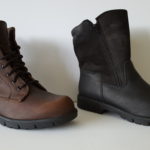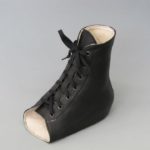Walking for Fitness
You must remember spring?
Walking for fitness is a great way to exercise and get your heart rate up no matter what the season. Walking is highly under-rated as exercise but in fact is much easier on your joints than running. It is estimated that ground reaction, the forces that can damage your body, are up to 1 ½ times your body weight with walking, and almost twice that for running. If you walk for just 30 minutes 4-5 times a week you will feel better and likely lose weight, reducing the risk of heart disease and diabetes.
Remember that running shoes are for running. Although they are light and flexible they may not give you the best support or protection. A good option is a trail runner as it combines the best features of runners and hiking boots yet are still light in weight. Walking or hiking on uneve n ground, winter roads or trails can be treacherous, especially if there is ice under the snow. A fall can result in an ankle, knee or hip injury. So be careful, reduce the risk! Using a hiking stick can increase your stability. Nordic walking, which is like cross-country skiing has become very popular. You carry two poles for balance and it gives an upper body workout too.
n ground, winter roads or trails can be treacherous, especially if there is ice under the snow. A fall can result in an ankle, knee or hip injury. So be careful, reduce the risk! Using a hiking stick can increase your stability. Nordic walking, which is like cross-country skiing has become very popular. You carry two poles for balance and it gives an upper body workout too.
Grab your favorite pair of sport socks and go to a reputable shoe store, sport outfitter or foot clinic to be properly fitted for the width and length of your feet. Take the shoes home and wear them around the house for a while to determine if they feel as good as they did at the store. If they don’t it won’t be a problem to exchange them for a different size.
We like hiking shoes because they support the ankle and have rocker soles with deep treads providing traction. Some are lined with waterproof materials. Dress for the weather in layers to stay warm, and wear reflective clothes if walking at night. Wear warm socks that will wick moisture away from the foot. Finally, find a friend to walk with. It is always more fun to walk with someone you can talk to. This will help to motivate each other. It is always a good idea to do some gentle stretches before and after your exercise, you are less likely to hurt if the muscles and tendons are already familiar with the loads that you are going to put them through. Start easy and build your endurance but if you experience any joint or muscle pain consult your family Physician.
What a great idea.
This article authored by Mike Daigle C. Ped(C) and Terry Trask C. Ped(C)
![]()
![]()
Appointment
REQUEST
APPOINTMENT


